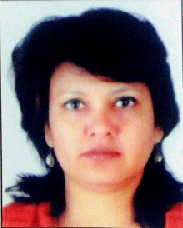 New Delhi:
New Delhi: In the last two decades, retail explosion and the popularity of synthetic fabrics have dealt a blow to weavers in West Bengal who churn out the traditional cotton handloom called 'tant'.
Tant is worn as the sari in eastern India. It has a crisp muslin-like finish and is light and comfortable. The tant zone of West Bengal includes Shantipur, Phulia, Samudragarh, Dhatrigram and Kalna - spread within a radius of 100 km.
"The textile is quintessentially Bengali. But we have to educate people about its importance as a national handloom and the impact of globalization upon it," said Biswajit Das who along with co-artist Camellia Suman is organising a series of interactive workshops here coinciding with Durga Puja.
For four days starting Sunday the workshops will highlight the plight of 'tangail' or tant weavers, most of whom are in the Nadia and Hooghly districts of West Bengal.
The workshops are being undertaken by two emerging multimedia artists at Pankha Road Banga Sammilani here in Janakpuri. Fifty percent of the proceeds from the show will go to the weavers involved in the project.
"We want to revive the lost charm of Bengal 'tant' textile through various initiatives and make it popular among the younger generation," Suman said.
Middlemen deny them a fair price, selling the textiles at prices much higher than the amount at which they buy it from villagers.
The artists were prompted to raise the issue after visiting Shantipur. They were shocked to witness the exploitation of tant weavers.
The campaign, "Maa Aschen Tant-er Sharee Te (The Goddess is Coming Draped in Tant)", will include a fashion show, live weaving tips by handloom weavers from Shantipur, a "tant" gallery and a photography exhibition to document the history of the textile, diverse usage and the life of the tanti, or traditional weaver.
The campaign will be followed by the creation of a trust by Suman and Das to ensure better facilities for weavers in the Shantipur cluster, linking it to various handloom initiatives at state and national levels.
"The middlemen sell the textile to retailers in the city at 200 percent more than the price they buy it from the weavers. The retail explosion has scaled down the demand for 'tant' textile and has destroyed traditional livelihoods," Suman said.
Hundreds of weavers have taken to alternative trades for subsistence.
The textile from the Shantipur cluster is considered to be one of the finest cotton textiles in the country.
For nearly 1,000 years, Shantipur and its adjoining villages in Nadia district have been known for their handloom cotton saris, known as Shantipuri tant.
After the partition of 1947, when Bengal split into West Bengal and East Bengal (located under erstwhile East Pakistan or present day Bangladesh), many skilled weavers from Dhaka migrated to West Bengal and settled down around the Shantipur and Kalna areas.
Weavers have clung to the tradition despite the inroad of modern design and mechanisation with their century-old vertical stripes, horizontal bands, chess board squares and boti (circular) motifs in the traditional palette of basic colours and narrow borders.
Shantipur is known for its superfine dhotis and jacquards - a set of complex designs, named after the inventor of the first semi-automatic loom, Joseph Marie Jacquard in 1801.
 New Delhi: In the last two decades, retail explosion and the popularity of synthetic fabrics have dealt a blow to weavers in West Bengal who churn out the traditional cotton handloom called 'tant'.
New Delhi: In the last two decades, retail explosion and the popularity of synthetic fabrics have dealt a blow to weavers in West Bengal who churn out the traditional cotton handloom called 'tant'.